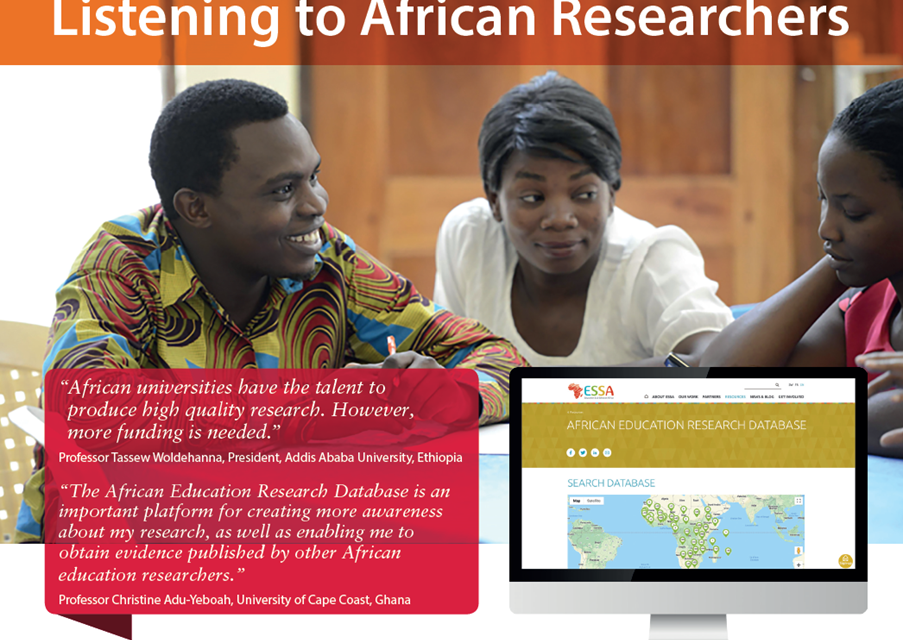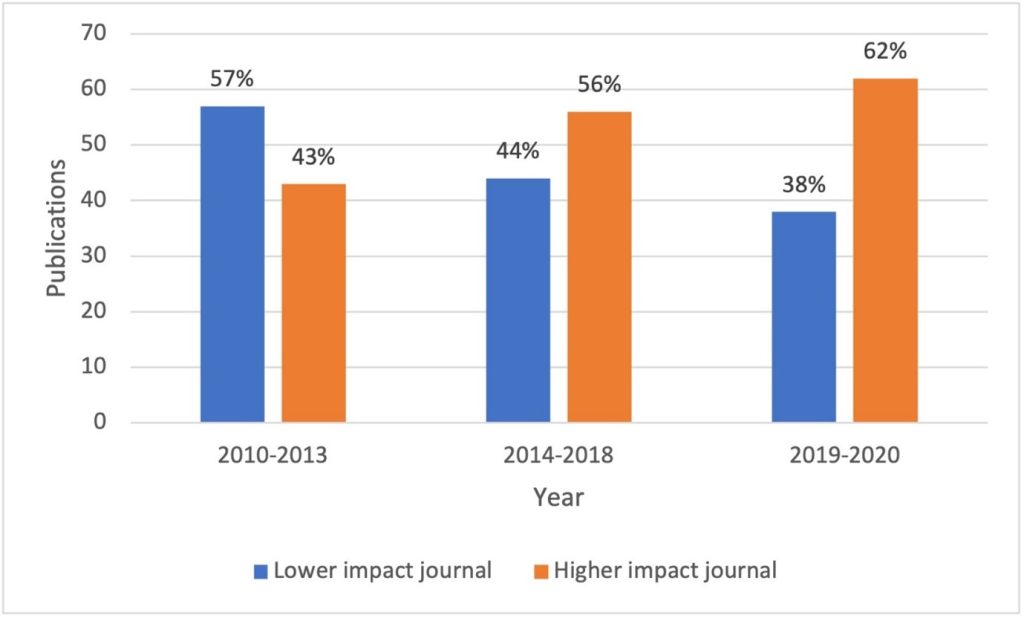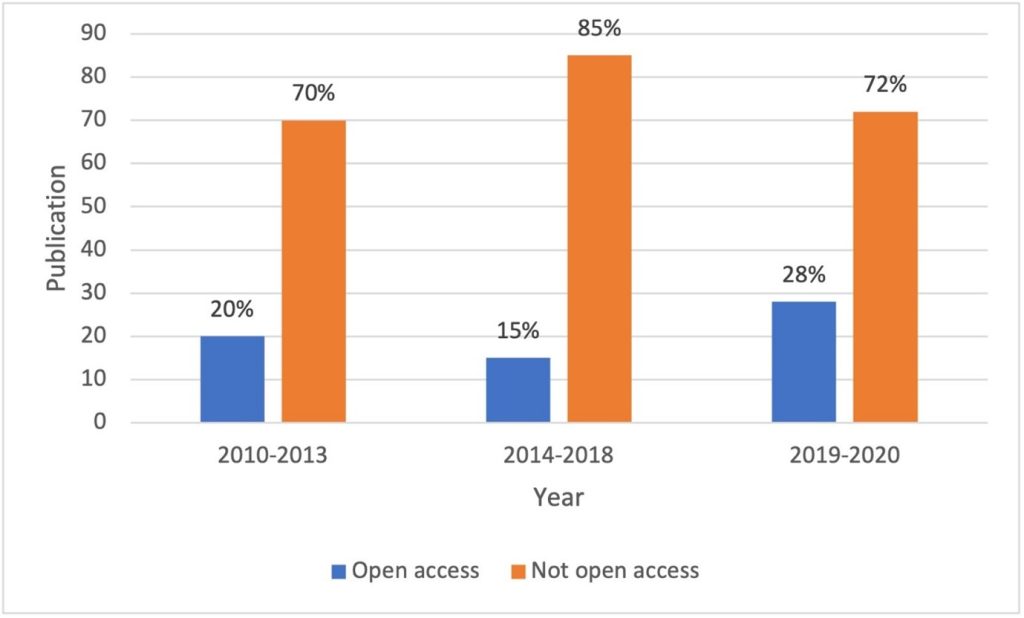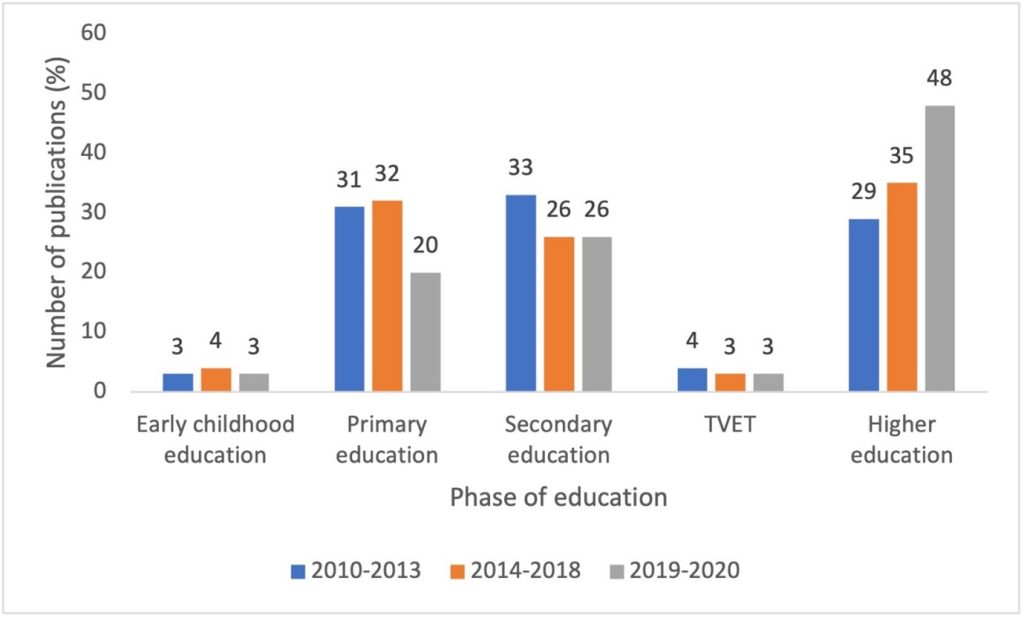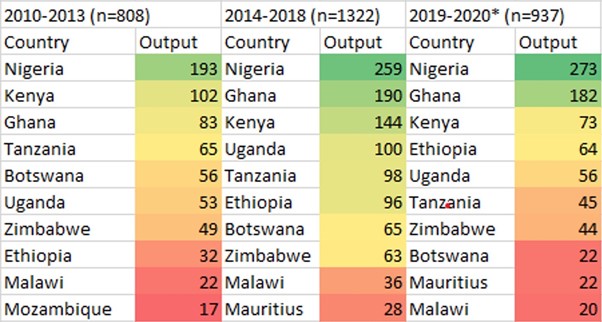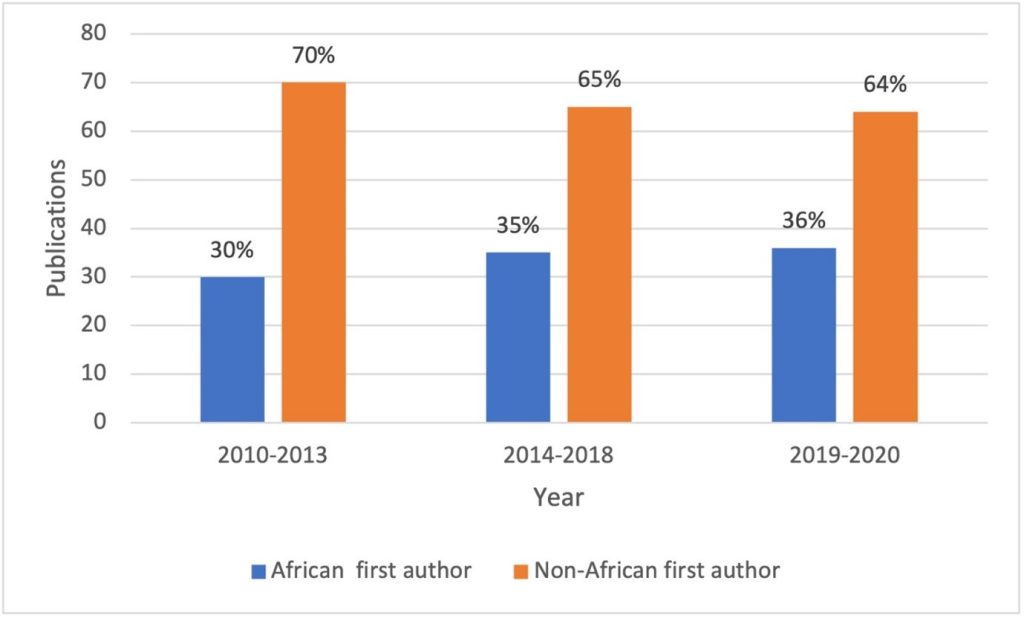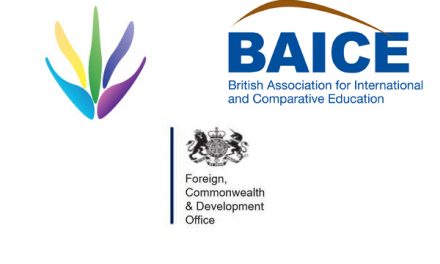This blog was written by Samuel Asare, Pauline Essah and Izel Kipruto from Education Sub Saharan Africa (ESSA); and Pauline Rose and Sandra Baxter from the Research for Equitable Access (REAL) Centre at the University of Cambridge. It was published on the Association for the Development of Education in Africa (ADEA) website on 14 October 2021. It was also published in French.
As education stakeholders increase their efforts to address low learning outcomes for students in sub-Saharan Africa, drawing on context-specific evidence to inform education policy and practice is imperative. To identify recent trends in the availability of evidence from African researchers, the Research for Equitable Access and Learning (REAL) Centre at the University of Cambridge, together with the charity Education sub-Saharan Africa (ESSA), have updated the African Education Research Database (AERD). The database, established in 2017, includes peer-reviewed publications on education by researchers based in 48 sub-Saharan African countries. In our previous blogs published by the Association for the Development of Education in Africa (ADEA), we highlighted the importance of strengthening the evidence base to inform decision-making in sub-Saharan Africa; and some preliminary analyses of which countries the research was coming from, and the thematic focus.
This new blog draws on findings from bibliometric analysis of over 3,000 publications in the database (AERD). These publications have been identified by our searching articles published in internationally-recognised journals. Given the scope of information available, we focus specifically on articles written in English – French publications are not included in this analysis as our structured searches of relevant databases have identified significantly fewer journal articles, in line with searches undertaken by other researchers. We include articles published over the last decade, 2010 to June 2020, in journals with international coverage and an impact factor of at least 0.2 according to SCImago data. We use the impact factor as a proxy for quality of the journals, erring on the side of inclusion. Journals identified as predatory were categorised as not reputable. We have chosen this focus because discussions with researchers based in Africa have highlighted that the impact factor of an international journal is an important measure to inform their decision about where to publish. This is partly because publications in ‘higher impact’ journals are considered positively for career progression in African higher education institutions.
The number of journal articles has increased dramatically in recent times
Between 2018 and 2019, there was a steep increase in journal articles, almost trebling compared to the previous year (Figure 1). Given that we only have data for the first six months of 2020, if publications continue at the same rate as between January and June, we can expect a similar number of publications in 2020, as in 2019.
Figure 1. Annual publications from 2010 to 2020*
*Note: 2020 data only include publications for January to June.
More articles are being published in higher impact journals
In Figure 2, we present patterns of publications in ‘lower impact’ journals (0.2 to 0.39) and ‘higher impact’ journals (0.4 or more). We find an increased proportion of publications in ‘higher impact’ journals by almost 20%, from 43% in 2010-2013 to 62% in 2019-2020.
Figure 2. Impact factor of journals
Most publications are still not available as open access
Since 2010, open access publications have increased from 20% in 2010-2013 to 28% in 2019-2020 (Figure 3). While this means that most journal articles are still not widely accessible, it is encouraging to see this improvement in the context of greater publication in ‘higher impact’ journals. These journal publishers often charge high publication fees that are likely to be beyond the reach of some African researchers and their institutions, although some are now providing fee waivers and discounts for those in low-income countries. The increase in open access publications, alongside increased publications in ‘higher impact’ journals could mean that researchers are becoming more aware of fee waivers and discounts provided by publishers, or that they have been more able to be successful in accessing them.
Figure 3. Publication by accessibility
Higher education and education technology receive an ever-increasing focus
Since 2010, an ever-increasing proportion of journal articles have focused on higher education (Figure 4). While there was a similar proportion of articles focused on primary, secondary and higher education in the first period we examined (2010-2013), by the most recent period (2019-2020) almost half of all publications were on higher education, with a notable decline in those on primary education in particular. By contrast, there has hardly been any change in the proportion of publications in early childhood education or technical and vocational education and training (TVET), which remain extremely low.
Figure 4. Phase of education
In the database, it is possible to identify publications according to their thematic area. There has not been much change in areas of thematic research focus, with language and curriculum, and teachers and teaching continuing to receive most of the attention. It is noticeable that education technology has experienced a consistent increase. In 2010-2013, education technology was the least researched theme, accounting for less than 5% of the thematic focus. However, by 2019-2020, it had risen to become the third most researched area, representing around 14% of the publications. This increasing trend has happened before publications relating to COVID-19 would have been available. It is likely that publications since the pandemic will further reinforce this trend. The increased focus on technology could be linked to the increase in research on higher education over the same period. In the last few years, technology has increasingly been identified as an important tool to increase access to higher education in sub-Saharan Africa, given low participation rates.
Where is research being conducted?
Overall, the top 10 countries with the highest research outputs have remained largely the same but with slight movement in positions (see Figure 5). For example, Nigeria, Ghana and Kenya have remained in the top three spots. There is, however, a noticeable rise in the rankings for Ethiopia which moved from 8th position in 2010-2013 to 4th position in 2019-2020. Conversely, Botswana declined from 5th position in 2010-2013 to 8th position in 2019-2020.
Figure 5. 10 countries with the highest number of publications research producing countries
*Note: 2020 data only includes publications for January to June.
The proportion of female authors is declining
From Figure 6, we see a worrying trend of a gradual decrease in the number of female authors from an already low base, declining from 29% in 2010-2013 to just 23% in 2019-2020. This suggests that the increase in publications in recent years, as shown in Figure 1, has particularly benefited male authors in sub-Saharan Africa. There is a danger that this trend could get worse, given the additional responsibilities that female academics have often had to take on in the context of the COVID-19 pandemic.
Figure 6. Gender of authors
There is a slight increase in first authorship for African researchers
We also explore first authorship of publications, to see the extent to which African researchers are recognised as leading publications (noting that such analysis can be complicated by different authorship ordering by disciplines, or where there are conventions for alphabetical ordering) (Figure 7). We see a positive trend of a slight increase in the proportion of African first authors over the period, from 30% in 2010-2013 to 36% in 2019-2020.
Figure 7. First authors of publication
In conclusion, in this blog, we have identified positive signs of the increasing availability of education research by scholars in sub-Saharan Africa. Overall, research outputs have increased, and more articles are being published in ‘higher impact’ journals and as open access. This demonstrates the capacity of African researchers to produce high-quality research.
We hope that the African Education Research Database will continue to be a useful resource for researchers and policy actors on the continent, as well as to enhance the visibility and use of African research globally.
The African Education Research Database can be accessed here.
Further publications drawing on the Database can be accessed here.

